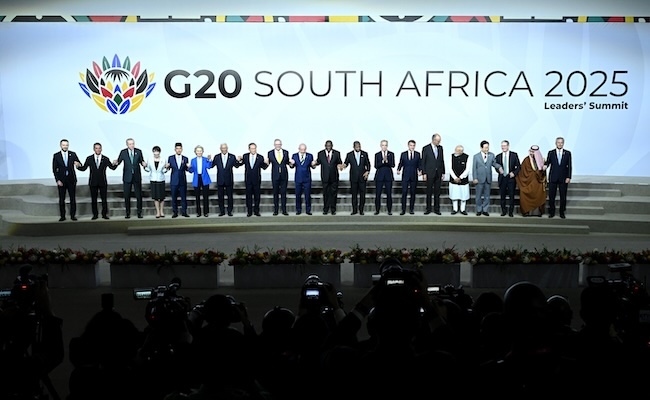Has there ever been a company as unlucky as global miner Anglo American? Every time it sells an asset, which it has done a lot, seemingly like absolute clockwork, that is precisely the moment the underlying metal’s fortunes turn around.
At the storied company’s interim results last week, CEO Duncan Wanblad made the comment that the successful demerger of platinum producer Valterra Platinum “unlocked significant value for shareholders”, which of course is true. But given the recent rise in the platinum price, you have to wonder if Anglo hasn’t slipped out of the party just before the festivities really begin.
The demerger became effective on May 31, and investors holding Anglo shares received 110 Valterra shares for every 1,075 Anglo shares owned. When the dust settled, Anglo’s 67% stake in Anglo Platinum was reduced to 19.9%.
Since then the share has bounced around a bit, and in this time, the platinum company has reported an 81% slide in earnings on absolutely huge demerger costs and production disruptions, while the interim dividend was cut 80%. A flat share price in this context is an achievement, yet the share is up 41% year to date.
From the point of view of Anglo shareholders, this is ominous, because it mirrors a string of divestments at almost exactly the wrong moment. Think of Thungela, Anglo’s coal assets which were spun off in 2021, and started trading on the JSE at R25 a share. By September 2022, the shares were trading at R377. The price has come back massively, but it’s still three times the value of its listing price.
This is really going back in time, but Anglo’s other big divestment was AngloGold, now AngloGold Ashanti. For years that seemed like a sensible decision. But with gold now having an extraordinary moment, incredibly Anglo’s former gold subsidiary is valued within shooting distance of its former parent.
The other example is diamond company De Beers, which Anglo sold at a low point, and bought back at a high point.
Whose fault is all of this? In some ways, this is all just the volatile mining industry; predicting the future of metals and therefore mining assets is crazy difficult. And there are lots of reasons why all these disposals looked sensible at the time, or were in fact more or less forced on the company.
The demerger of Valterra was arguably one of those forced moves, prompted by rival BHP’s aborted takeover bid. BHP’s takeover plan also involved the demerger of Anglo Platinum, which was weighing on Anglo at the time, so as part of Anglo’s defence, it seemed sensible to mimic this idea, which shareholders liked.
And speaking of shareholders, 99.94% approved the demerger, so ultimately the sale of one of Anglo’s world-class assets is on them.
But is it possible that the curse of Anglo’s demergers and asset sales has come back to haunt the company once again?
Platinum price exploding
Platinum (and palladium and rhodium) are metals that many investors had written off as in irretrievable decline because internal combustion engine (ICE) cars were going to be made redundant by EVs.
But this narrative is, inevitably, not panning out exactly as planned; the conversion to EVs is happening, but not as fast as previously thought, and it may not go as far as previously predicted, either. Analysts are now predicting that EV sales will grow from about 15% market share to a 30% market share by 2030.
That’s huge growth, but it still means about 60-million cars a year will need catalytic converters – the main industrial use for platinum and palladium. There is also another quirk: hybrid cars, it turns out, are proving popular, and they actually require more platinum group metals than ordinary ICE cars.
There has also been rising jewellery demand — especially in China – with consumers pivoting away from high‐priced gold toward under-valued platinum.
But a 16-year bear market in platinum has throttled supply. The result, according to resources investor Goehring & Rozencwajg, is a platinum production deficit of between 500,000 and 750,000 ounces. It argues that platinum inventories will fall to 3-million ounces this year – a nearly 40% drop in just two years.
“In our view, today’s deficit conditions in both platinum and palladium are not only real – they’re likely to persist far longer than the market currently expects,” the fund writes in a June research report. No wonder the platinum price is exploding; it is currently about $1,300/oz after languishing for years at about $950/oz – nicely timed for Anglo’s big platinum demerger.
“Over the past 18 months, a growing number of supply and demand signals have begun to flash in concert, suggesting that a long-overlooked corner of the commodity world may be on the cusp of making a significant bullish move,” says Goehring & Rozencwajg . In fact, it calls the opportunity being offered to investors right now “every bit as spectacular” as that of the early 2000s.
In his presentation at the interim results, Wanblad said Anglo was delivering on its strategy of transforming the company into a “higher margin, more cash generative and more valuable mining company”. But he might have added a less diverse and smaller company with a narrower focus, now very dependent on copper and iron ore.
This decision to focus on the metal of the moment raises one of the oldest debates in the mining industry: is there a logic behind the notion of a “mining house” with a diverse set of assets which can balance each other out in the hurly-burly of commodity price variations.
Many investors just hate this idea because it almost always entails a conglomerate discount. But when you look at the longer-term trajectory of Anglo American, you have to wonder whether there wasn’t something to this idea after all.
That debate will continue indefinitely, but in the short term what is undoubtedly true is that BHP probably dodged a bullet when its $50bn bid for Anglo last year failed, since its target company now has a market cap worth $33bn.
This story is produced in partnership with Stanlib.
Top image: Anglo American CEO Duncan Wanblad. Picture: supplied.
Sign up to Currency’s weekly newsletters to receive your own bulletin of weekday news and weekend treats. Register here.















From state capturer to unpatriotic exiteer in 120 years. Not a good corporate citizen.